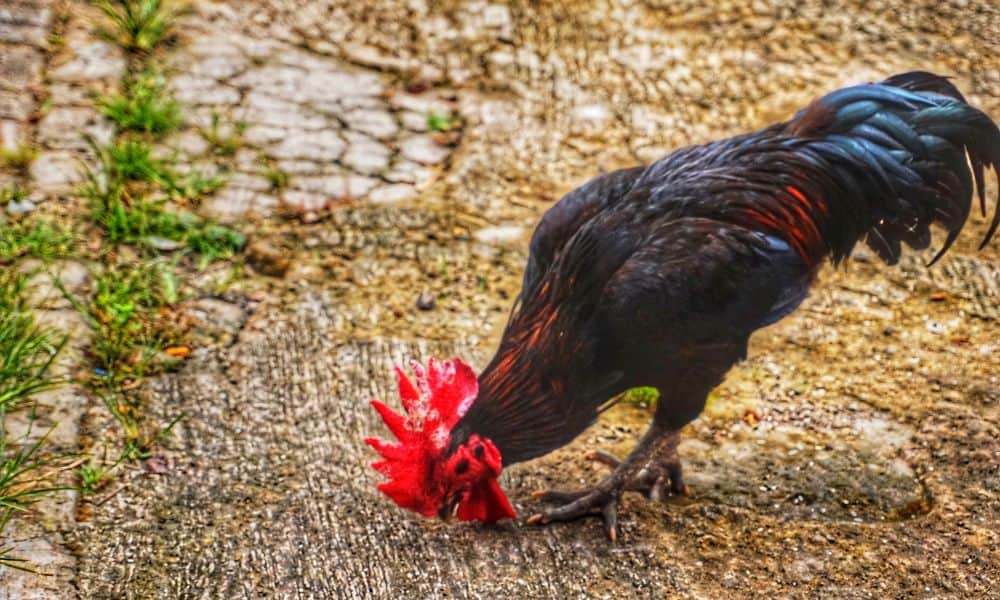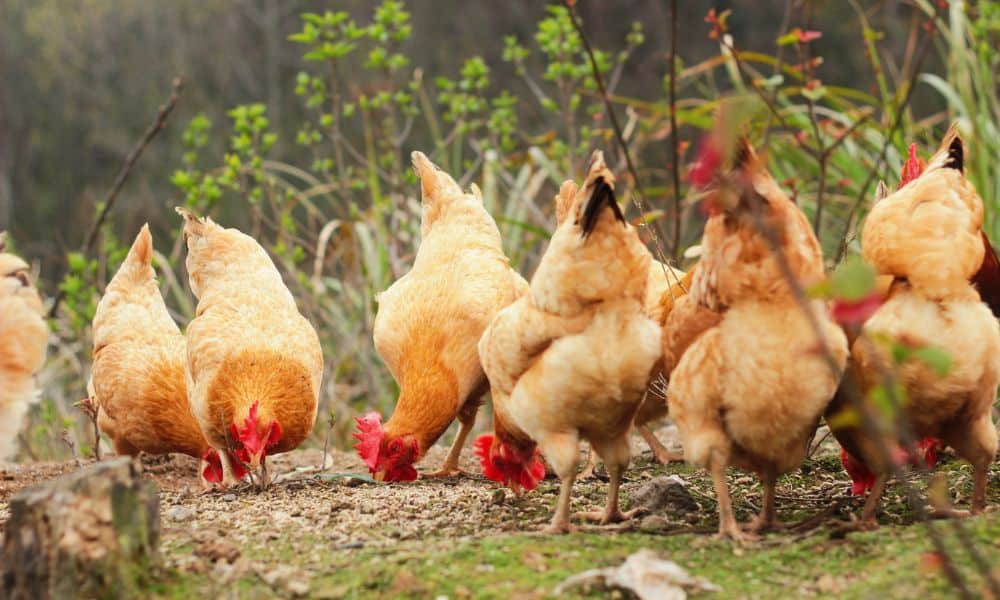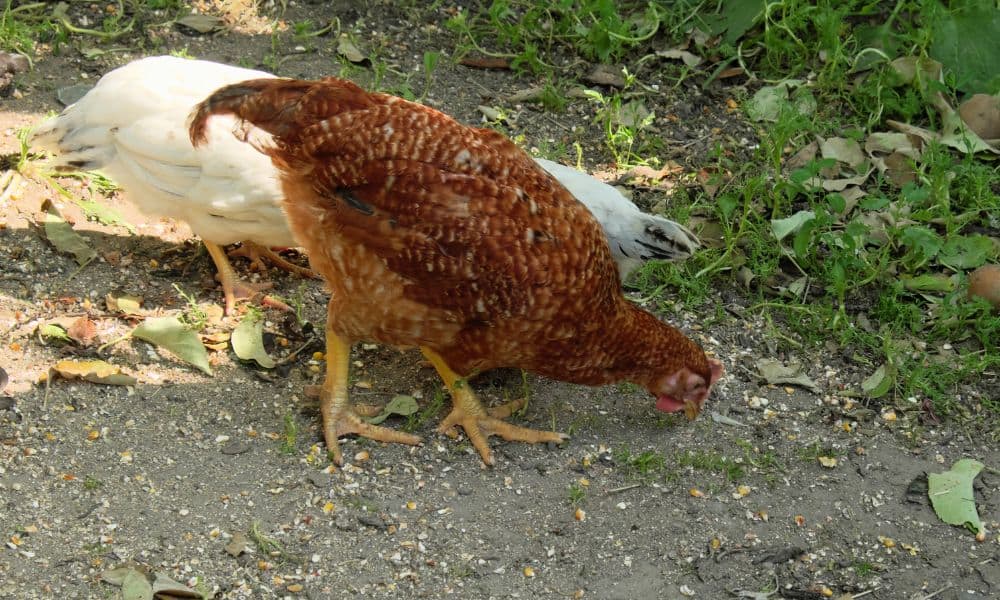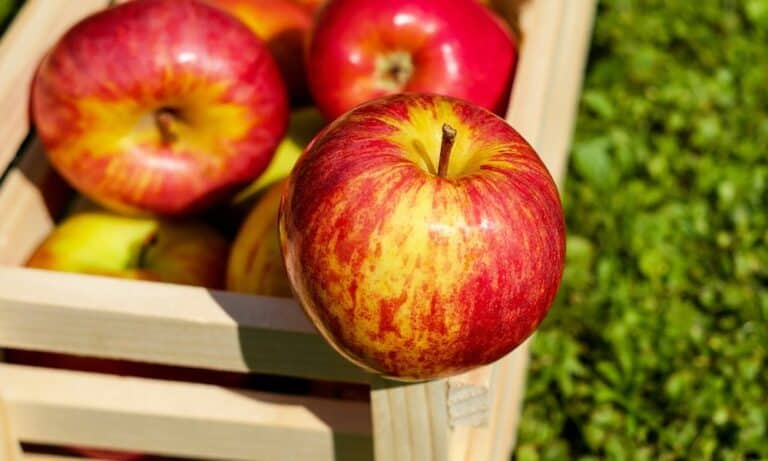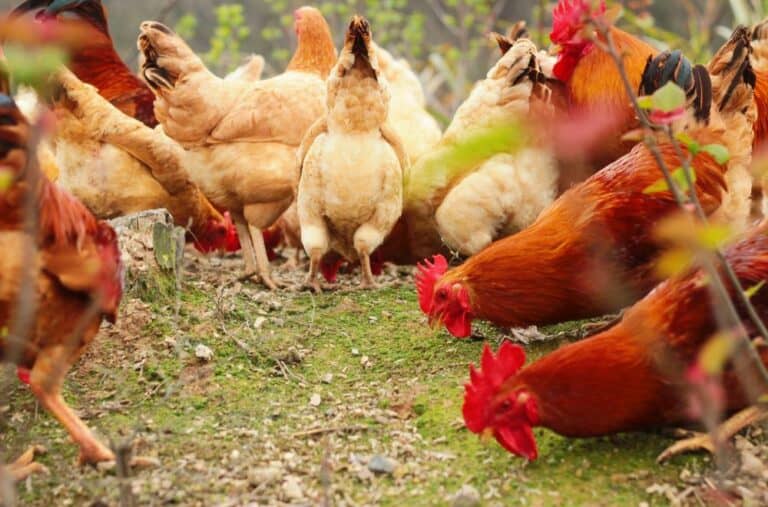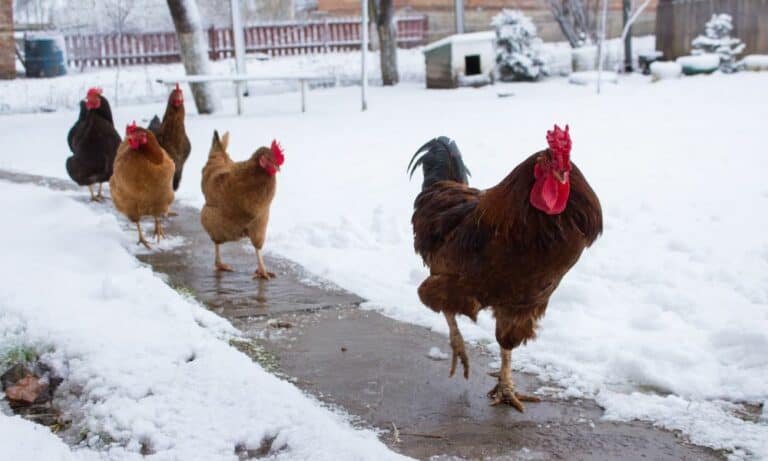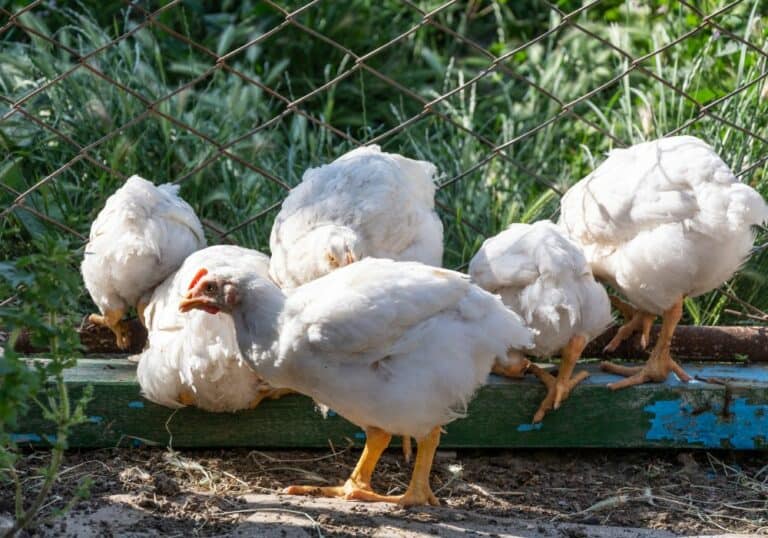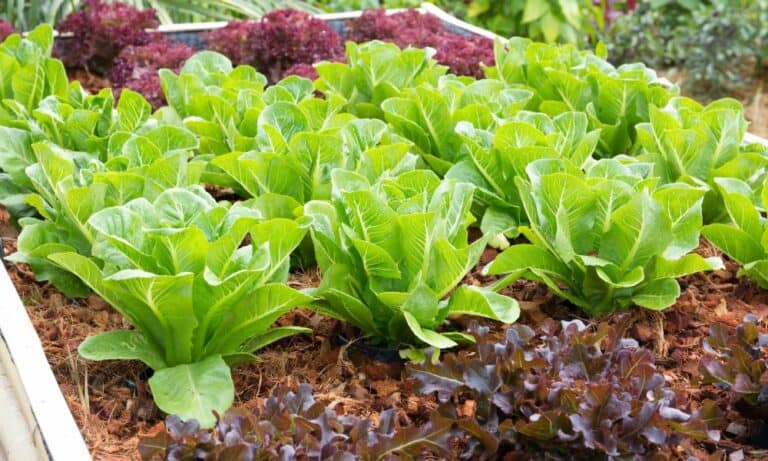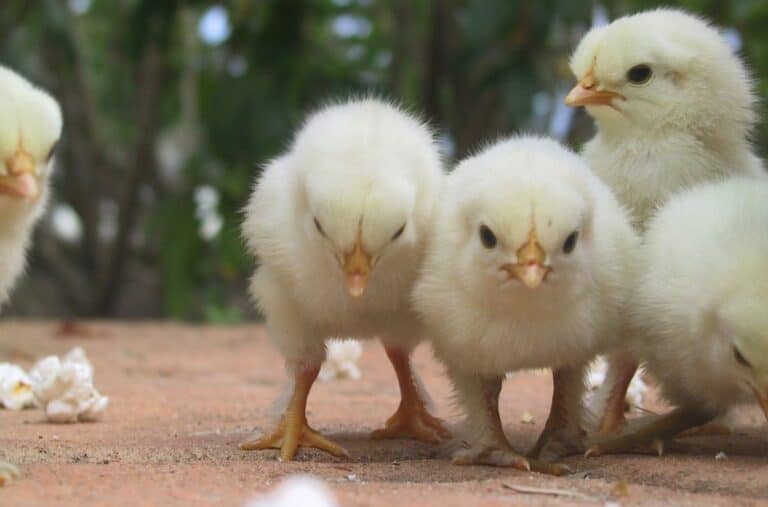Chickens are omnivores that enjoy eating whatever they find outdoors. Even though most people consider them exclusively domestic birds, a few species still live in the wild. Unlike poultry on farms, they need to find food on their own, making them entirely independent of people.
The interesting thing is to figure out what do chickens eat in the wild, regardless of whether it is wild flocks or feral fowl living this way due to circumstances. Most spend time looking for food and consume various ingredients, including worms, insects, seeds, and grass. Let’s take a look.
Wild Chickens
Genuine wild chickens have never been domesticated and live unrelated to human presence. They use their instincts to hunt and find food and never expect to be fed any other way.
The most recognizable wild chicken breed is the Jungle Fowl, and scientists consider them ancestors of domestic fowl. You can still find them in Australia, Southeast Asia, Indonesia, and India.
Flocks of wild chickens typically choose habitats like tropical forest borders, rainforests, shrubby regions, bamboo forests, and tall grass. They don’t depend on a specific place and often migrate across various habitats in search of water and food.
Since these birds look for food in nature, their diet is significantly different from domesticated poultry. Instead of commercial food specifically based on chickens’ age and purpose, wild ones primarily feed on worms, insects, and plants.
Feral Chickens
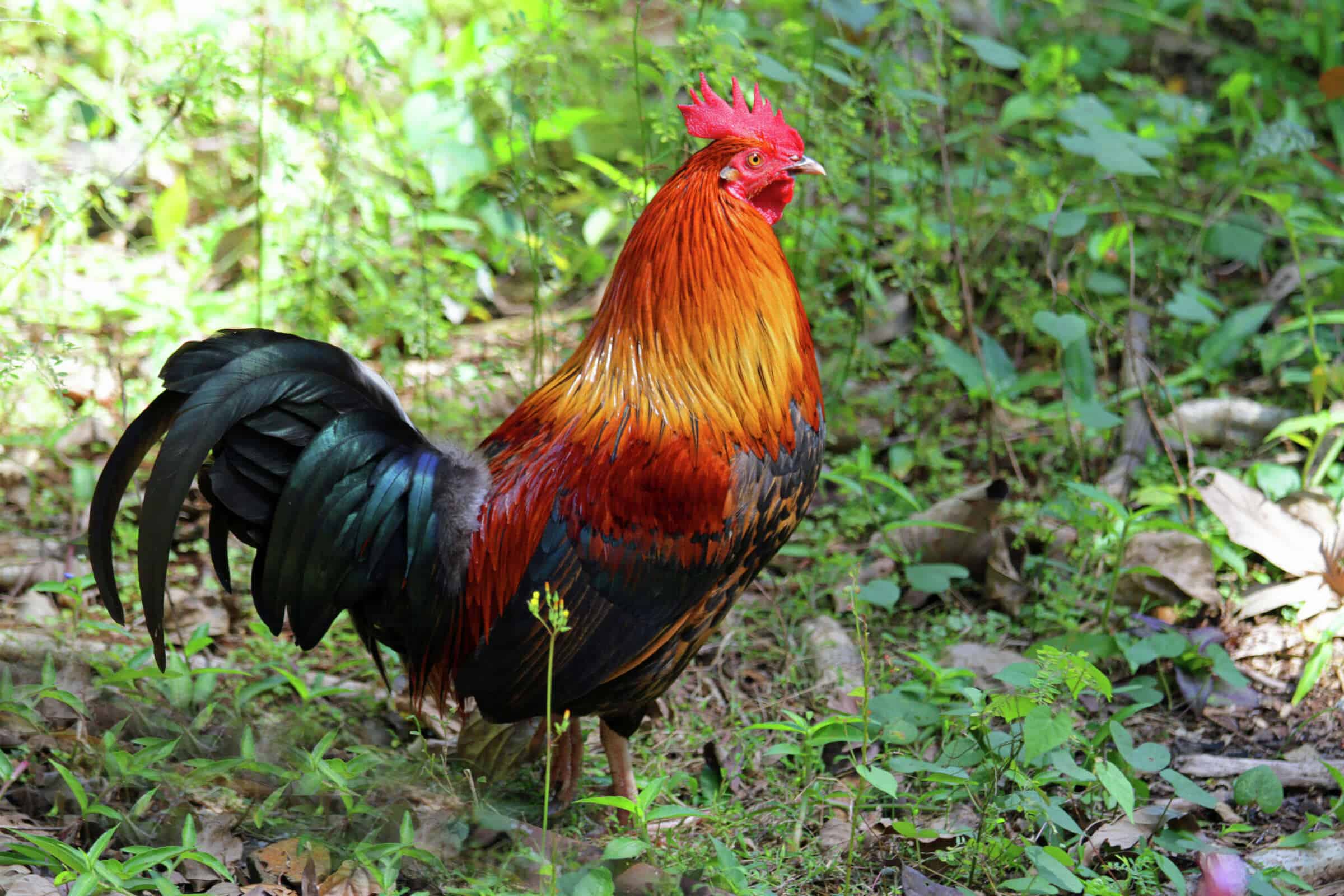
It is a unique poultry type because these birds are neither domesticated nor wild in the true sense of the word. Flocks living in Hawaii, Bermuda, and a few other states, like Louisiana, California, and Texas, were domesticated once but ended up in the wild due to unforeseen circumstances.
They have established a stable breeding population and live independently in the wild. Their feeding is a combination of food found in nature and leftovers they steal from the garbage or crops, like beans, tomatoes, lettuce, broccoli, cauliflower, carrots, and strawberries.
The problem appears when these birds come into contact with domestic poultry and transmit diseases. Additionally, they typically don’t have natural predators in the area of release, so no one can keep the population under control.
Each hen lays approximately five eggs, with a 75% survival rate. Simple math shows that only one hen can get enough chicks to reach over 1,000 pullets in two years. Since they are basically pests, you should avoid feeding them.
What Do Chickens Eat In the Wild?
Wild chickens may rely only on themselves, so they eat whatever they find in the wild. In other words, they spend most of the day foraging and use their beaks and strong legs to dig the ground and kill small animals before consuming them.
Unlike domestic poultry, these birds entirely depend on seasons, the environment, available food sources, and water from natural sources. Therefore, they rely on instincts and resourcefulness to survive.
1. Seeds and grains
Wild chickens often dig the soil or break fruit to find yummy seeds available in their habitats, including:
- Grass seeds
- Sunflower seeds
- Pumpkin seeds
- Hemp and sesame seeds
- Buckwheat and flax seeds
- Cracked corn and rapeseed
- Wheat and barley
- Sorghum and oats
- Malted grains
Most seeds contain compounds that make egg yolks get a reach yellow-orange color. They also have omega-6 fatty acids, B-complex vitamins, minerals, and trace elements. Even though some seeds are highly toxic for chickens, they rarely consume them. The list of poisonous ones includes:
- Potato seeds produced after flowering
- Ricin family seeds
- Sweet pea and bean seeds
- Lily of the Valley and Morning Glory seeds
- Foxglove and Jack in the Pulpit seeds
- Poppy seeds ingested in a high amount
2. Bugs
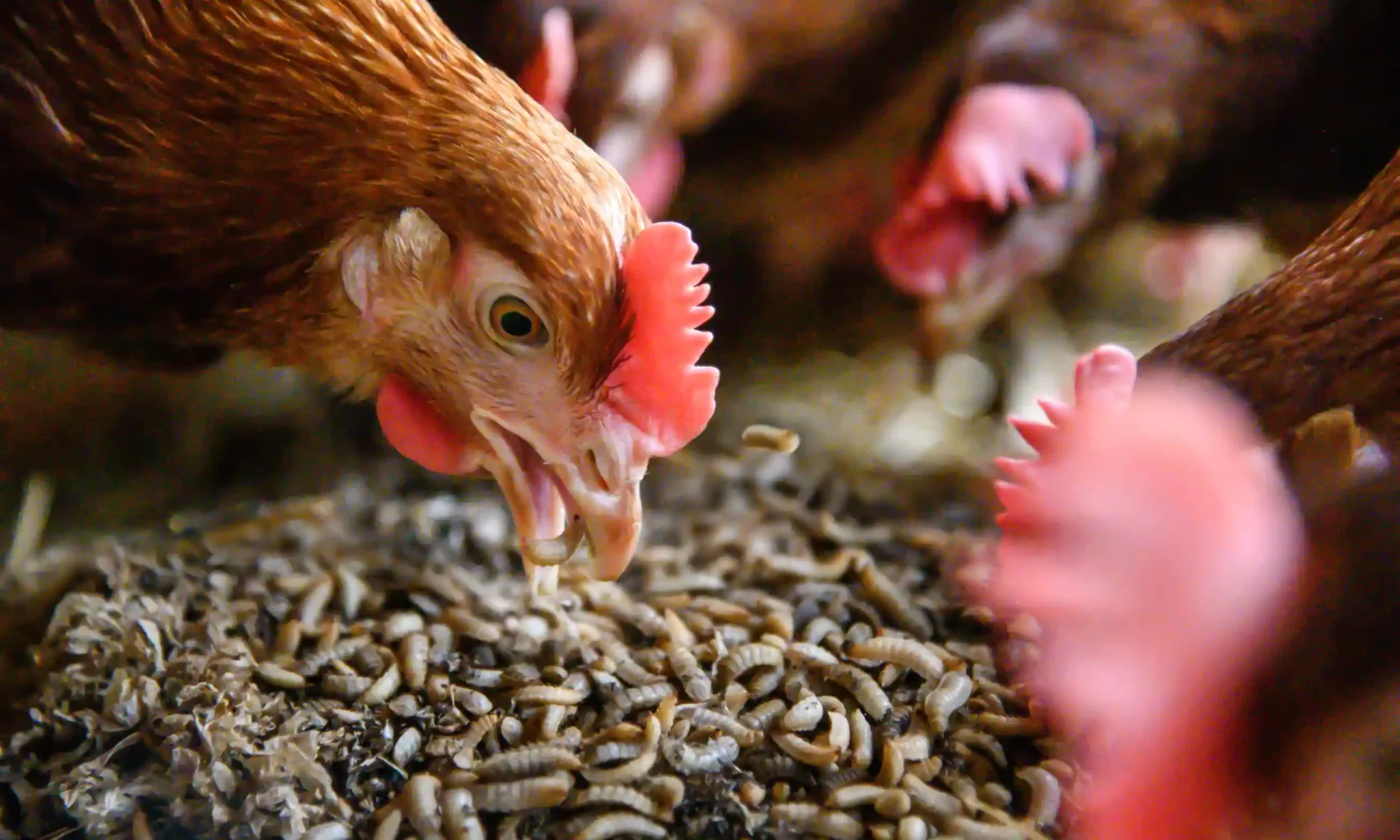
Most chickens enjoy consuming insects, like:
- Beetles and grubs
- Grasshoppers and crickets
- Flies
- Caterpillars and larvae
- Termites and winged ants
- Ants (rarely)
Favorite arachnids wild chickens look for to add to their everyday diet are ticks and spiders. Additionally, they often find yummy arthropods like millipedes on small branches.
All these bugs are rich in protein crucial for egg production and necessary fat for healthy growth. On the other hand, fowl never consume smelly and potentially harmful bugs, like:
- Bees
- Stink bugs
- Box-elder bugs
- Asian ladybugs
3. Worms
You might think wild chickens bite the ground when seeing them from a distance, but they only use their beaks to find worms living underground. These slimy creatures are one of their favorite food.
An average chicken can eat up to 150 worms a day, depending on its age and other available food. When fowl have various ingredients at their disposal, they enjoy only 5 to 10 worms a day, but that number increases when necessary. They often peck:
- Mealworms
- Earthworms
- Red wigglers
Worms are beneficial food for wild chickens, thanks to their high protein (60% to 70%), fat (5% to 10%), and mineral levels. Interestingly, earthworms contain more amino acids, like methionine and lysine, than meat.
4. Fruit

Fruit and berries are fantastic treats for wild chickens, and they can’t resist eating this sweet food whenever they find them. They particularly enjoy the flavor of:
- Apples, pears, and grapes
- Peaches, mangoes, kiwis, and pineapples
- Cherries, strawberries, and bananas
- Pumpkins, melons, squash, and cantaloupes
- Coconuts and pomegranates
- Bell peppers and cucumbers
- Berries like raspberries, blueberries, cranberries, and blackberries
Fruit is a healthy addition to wild chickens’ diet because it is packed with nutrients. For instance, apples provide numerous valuable vitamins and minerals, while melons are a water source during the summer.
Additionally, berries contain fiber and antioxidants, keeping flocks healthy. Wild chickens almost always consume whole fruit with the peel and rinds, getting enough fiber and minerals, particularly calcium, potassium, and phosphorous.
5. Veggies
Vegetables provide a well-balanced diet to wild chickens. They take advantage of many of them growing in the wild or vegetable gardens, such as:
- Lettuce and spinach
- Swiss chard, cauliflower leaves, and beets
- Mustard greens, turnip greens, and collard greens
- Watermelons
- Carrots and peas
- Brussels sprouts and cabbage
- Carrot tops and radish tops
- Asparagus, broccoli, and kale
- Garlic
6. Greenery and grass
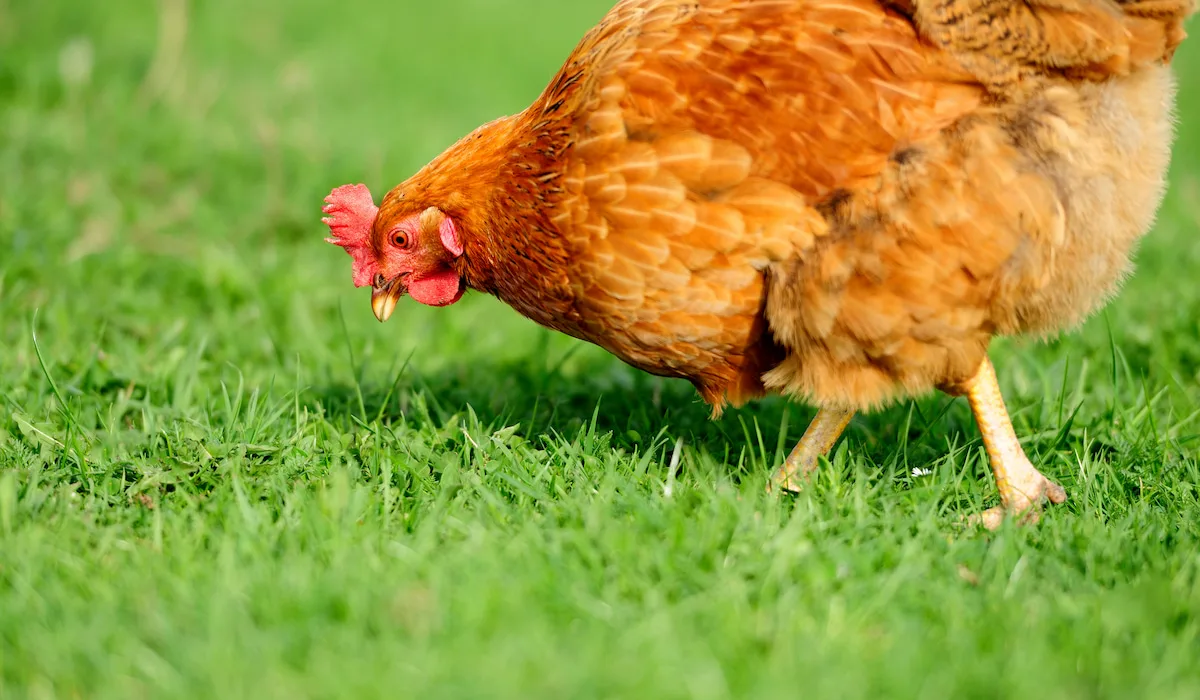
Since domestic poultry like consuming grass, you can suppose that it is the same with wild chickens. Many nibble the grass while looking for insects, caterpillars, and worms to supplement their meal, particularly:
- Grass
- Grass cuttings
- Weeds
7. Plants
Even though weeds are plants that grow around out of control and can be invasive, many are beneficial, making excellent food for wild chickens. They are packed with valuable nutrients, so poultry enjoys eating them from spring to fall. The best options are:
- Clover and dandelions
- Nettles and purslane
- Chickweed, pigweed, and jewelweed
- Wild violets and plantain
- Bee balm
- Plantain leaves
- Amaranth, sunflower, and corn plants
8. Herbs

Besides grass and weeds, wild chickens can enjoy numerous herbs that attract them thanks to their beautiful fragrance and delicious taste.
- Thyme, sage, and parsley
- Oregano and basil
- Comfrey and wormwood
- Rosemary and lavender
- Fennel and dill
- Mint and lemon balm
- Young nettles
The problem with herbs is that only a few grow freely in the wild. Therefore, feral chickens often steal them from gardens, doing immeasurable damage.
9. Small animals
Even though meat is an excellent food for wild chickens, those found in the wild or the garbage can contain parasites and rodenticides. Anyway, this poultry happily grabs, kills, and swallows small animals, such as:
- Mice
- Snakes
- Lizards
- Frogs, including cane toads
- Snails
- Eggs
- Scavenge in rare cases
Unfortunately, decaying meat can be fatal for fowl because it is often a source of botulism toxin. There is one more danger for wild chickens. Those trying to catch and consume a snake can end up killed by its venom.
10. Leftovers
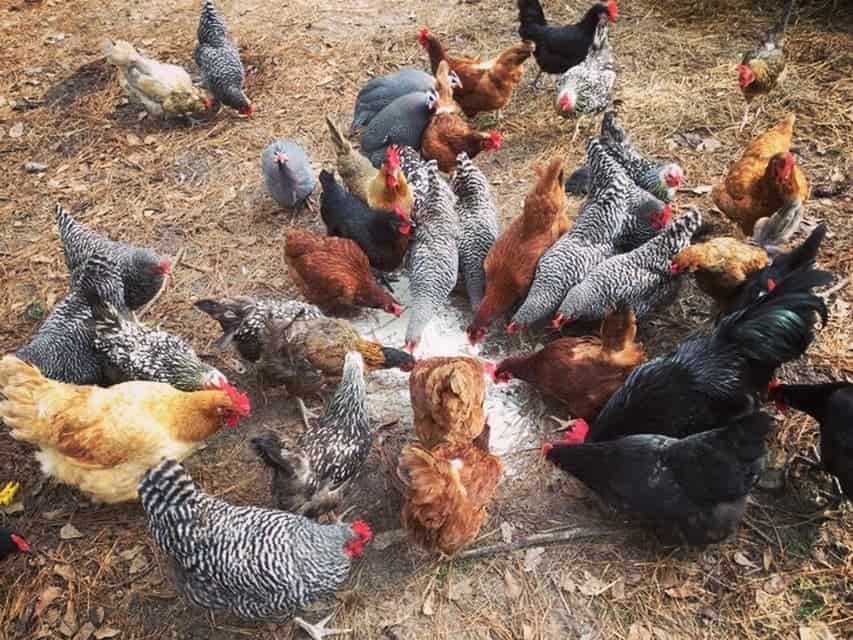
Feral chickens sometimes approach human houses and feed on leftovers. It typically happens when they run out of food in nature, mainly during cold months.
They enjoy nibbling popcorn and nutritionally rich cooked rice, but you should be careful with throwing out bread and pasta. While bread is nutritionally void food for fowl, pasta can be harmful because of its high sugar content.
On the other hand, some species enjoy eating meat scraps, including chicken scratch, fish, and even turkey carcasses.
Wild Diet vs. Commercial Diet
While farm chickens primarily feed on commercial food, wild flocks spend time foraging and eating whatever is available. Their method is less expensive and more diverse, but food designed explicitly for poultry allows higher meat and egg yields.
For instance, commercial chicken feed is complex and includes precise nutrient percentages adapted to their age and purpose of cultivation. A standard well-balanced formula consists of the following:
- Protein sources
- Cereals
- Seeds
- Accurately dosed treats
On the other hand, wild chickens’ diet never includes specified amounts of particular nutrients. Therefore, they often suffer from a deficiency of some nutrients while getting the others in surplus.
They are also at risk of consuming potentially poisonous food. However, their diet is natural and without harmful pesticides and additives, while the water they drink is always fresh. That makes their way of feeding the healthiest options available for fowl.
Summary
Most chickens are tamed nowadays, and their well-being depends on humans. However, you can still find fowl living in the wild, including wild chickens and feral poultry that appeared there by chance and due to unforeseen circumstances.
They look for areas with available water sources and feed on bugs, plants, worms, wild fruit, weeds, and leftover human food.

